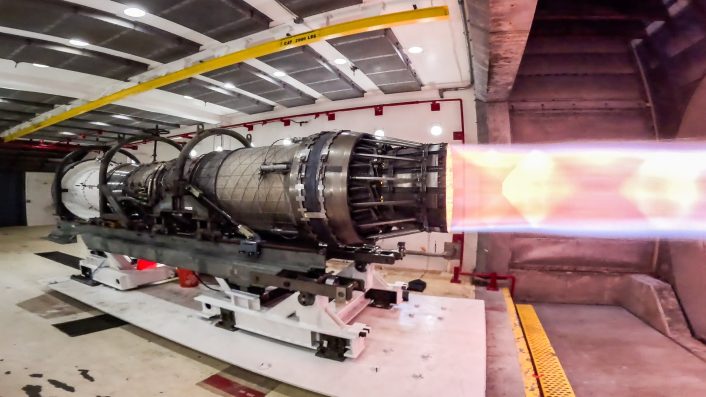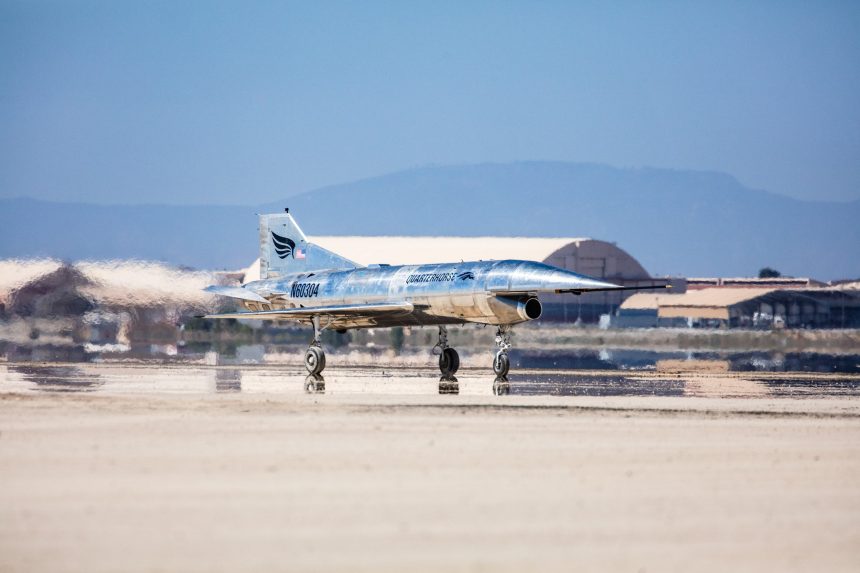The high-speed uncrewed test aircraft performed its first flight at Edwards AFB, just a year after the launch of the development.
Hermeus, a U.S. company aiming to develop hypersonic aircraft quickly and cost-effectively, flew for the first time its uncrewed Quarterhorse Mk 1 test aircraft last week, said the company on May 27, 2025. The test flight was conducted at Edwards Air Force Base, California, with the aircraft shown taking off and landing on the base’s dry lakebed runways.
Quarterhorse Mk 1, a remotely piloted aircraft powered by a General Electric J85 engine (the same used by the F-5 and T-38), was first unveiled in March 2024 and is intended to demonstrate high-speed takeoff and landing, a key enabling capability unique to future hypersonic aircraft on the company’s roadmap.
Airborne! Last week, Quarterhorse Mk 1 took off from Edwards AFB, achieved stable flight and landed smoothly. Mk 1’s flight validated our rapid, iterative approach to airplane development and advanced our mission to radically accelerate aviation. pic.twitter.com/Gc8hWgiX9U
— Hermeus (@hermeuscorp) May 27, 2025
The development progressed quickly, with the company mentioning “Quarterhorse Mk 1 went from clean sheet to flight-ready in a little over a year.” The aircraft completed ground testing in December 2024, and, on that occasion, it was mentioned that design and build required only 204 days.
“Mk 1 has redefined the pace of developing and flying new aircraft,” said Hermeus CEO and Co-Founder, AJ Piplica. “I’m incredibly proud of what our team has accomplished. We’ve proven the viability of our iterative development approach. But this is just the start. We have much more to do as the bar rises for the next iteration.”
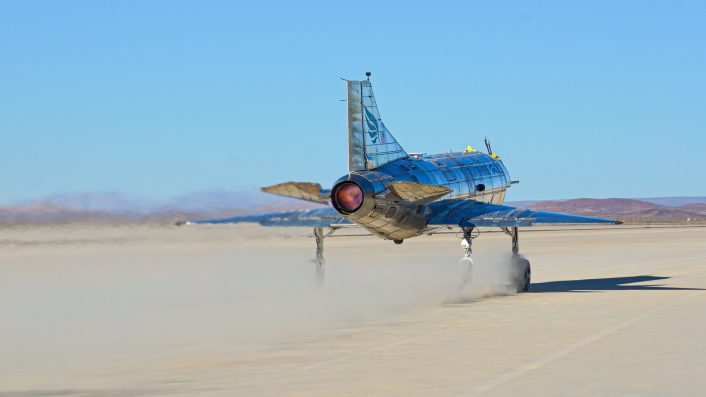
Testing
The ground portion of the testing, which preceded the maiden flight, allowed to conduct integrated testing of all vehicle subsystems as well as the software and hardware of the ground control station. “Ground testing culminated in 130-knot (150 mph) taxi tests with full afterburner on Edwards’ iconic dry lakebed, offering a valuable opportunity to validate aerodynamic model assumptions, assess the aircraft’s directional control, and evaluate the performance of control surfaces, among other things,” explained the company.
Quarterhorse Mk 1 was designed to demonstrate remote takeoff and landing, which the company described as the most critical phases of flight. The video released shows just that, with the aircraft lifting off, flying over the runway at low altitude and landing again.
The reason for which the company considers takeoff and landing as critical phases is because of the design, as Quarterhorse Mk 1 features low aspect ratio wing, high wing loading, and a low thrust-to-weight ratio to obtain the required high-speed aerodynamic design. This, of course, has a cost, with the aircraft being less responsive and having higher stall speed, which in turn means higher takeoff and landing speeds.
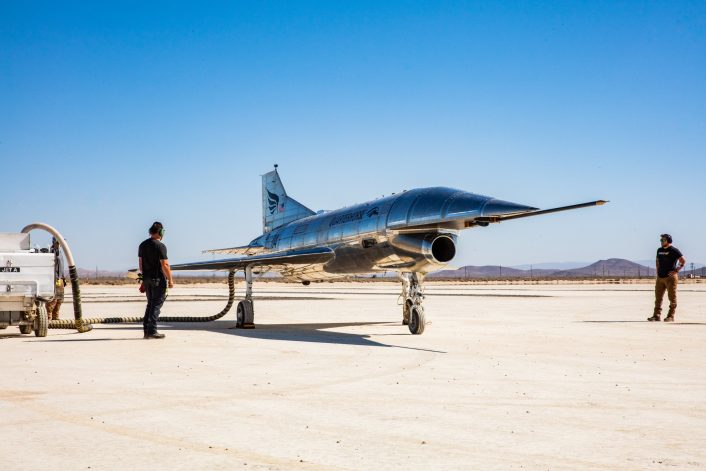
“Data from the campaign has validated design and performance models, including aerodynamics, stability and control,” says Hermeus’ press release. The testing also helped to validate the performance of the vehicle’s subsystems. Previously, the company mentioned among the objectives “evaluating the effectiveness of control surfaces in flight, assessing performance and handling at high angles of attack, testing maneuverability under high wing loading, and validating control gains and filters within the flight software.”
“The real-world flight data from Mk 1 provides significant technical value that we’re rolling into our next aircraft,” said Co-Founder and President Skyler Shuford. “Moreover, the team has accomplished this milestone on a challenging timeline while operating within the overall aerospace ecosystem — all to support rebuilding America’s lost capability to quickly develop brand-new, full-scale jets.”
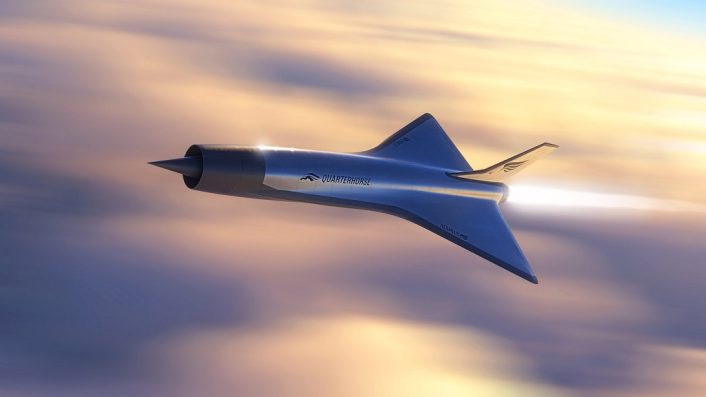
Hermeus’ ultimate goal
Hermeus, since the beginning, has laid out a development roadmap with an iterative design based on four aircraft, each with a specific purpose, with the ultimate goal of breaking the airspeed record held by the SR-71 Blackbird. Each aircraft will progressively increase in complexity allowing Hermeus to distribute program risk across multiple vehicles and accelerate learning:
- Mk 0: ground testing only, demonstrated remote command and control taxiing;
- Mk 1: the first flight vehicle, will demonstrate remote takeoff and landing;
- Mk 2: supersonic aircraft which will demonstrate automated supersonic flight below Mach 3;
- Mk 3: will demonstrate turbojet to ramjet transition and attempt to break the SR-71’s records.
The Mk 0 was designed and constructed within six months, and all test objectives were completed in just 37 days of deployed testing. Similarly, the Mk 1 was designed, built, and integrated in just seven months. Hermeus, in fact, has set the pace of one aircraft per year for the development of their hypersonic aircraft.
After unveiling the Mk 1 vehicle, Hermeus also shared details about the Mk 2, which resembles the D-21 drone which was paired with the A-12 (the SR-71’s predecessor). Quarterhorse Mk 2 is currently being manufactured at Hermeus’ headquarters in Atlanta, and is expected to fly by the end of 2025.
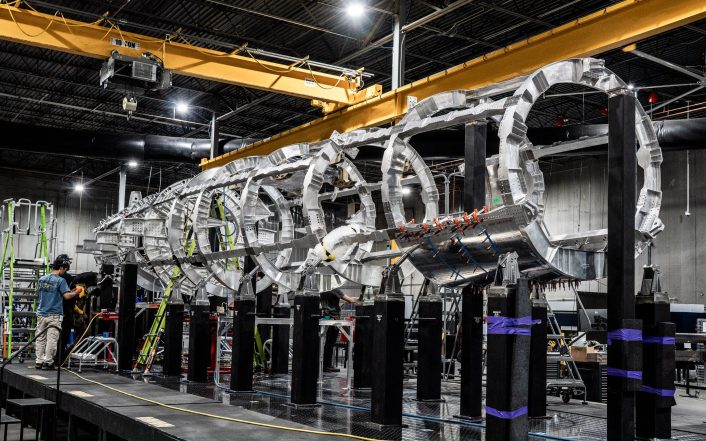
The company describes the aircraft as a “high-Mach aircraft designed to de-risk uncrewed supersonic flight,” which “will enable both high-cadence hypersonic flight test and novel operational defense capabilities.” The aircraft has both the scale and the Pratt & Whitney F100 afterburning turbofan engine of the F-16.
The engine will feature a proprietary precooler technology which will allow the Mk 2 to reach Mach 2.5. The precooler will allow the increase in performance by decreasing the temperature of the air ingested by the engine.
This precooler will be part of the Mk 3’s engine, a turbine-based combined cycle (TBCC) engine named Chimera, described as a full-range, air-breathing hypersonic engine combining a turbine with a ramjet. “At low speeds Chimera operates in turbine mode with the F100 engine, while at higher speeds the engine transitions to ramjet mode,” says the company, adding that this will allow Quarterhorse Mk 3 to reach Mach 4.
